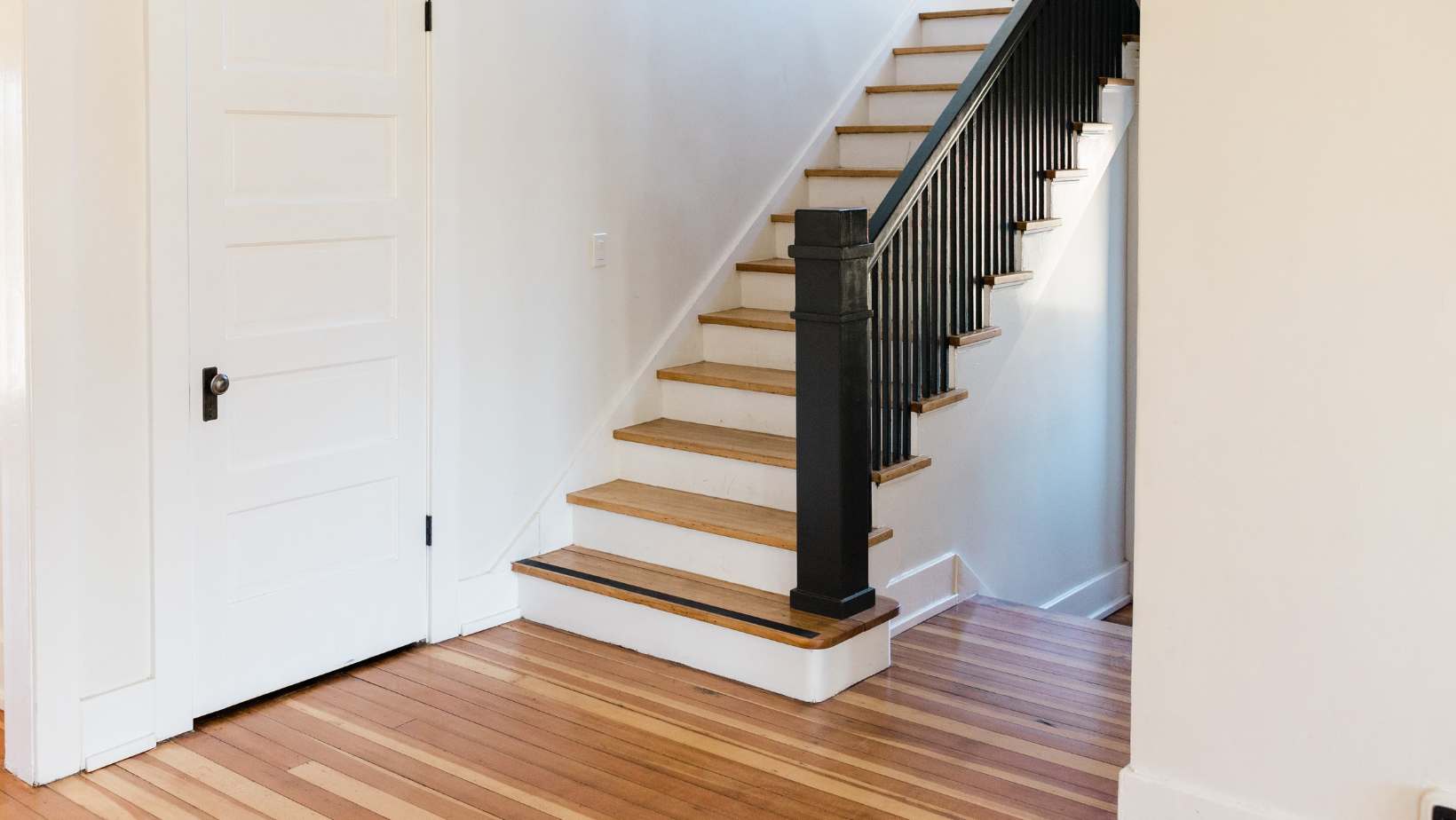This article will demystify the concept of stair nosing and provide a comprehensive guide to understanding the different styles and options available. From explaining the purpose of stair nosing to exploring the various design choices, this informative piece will help readers make informed decisions for their staircases.
Stair Nosing refers to the edge of a step that protrudes slightly over the tread. It's important to measure correctly when installing carpet stair treads.
Types of stair nosing includes: bullnose, square, flush, and rounded, to name a few.
Note: carpet stair treads can also come in differing styles of stair nosing.
What is Stair Nosing?
Stair nosing is a term that refers to the edge of a step or staircase that protrudes slightly over the tread. Its primary purpose is to improve safety by providing a visual cue for the edge of the stairs, preventing slips and falls. Additionally, stair nosing helps protect the edges of the stairs from wear and tear, enhancing the longevity of the staircase.
Stair nosing is an essential component of staircase design, as it not only serves a functional purpose but also contributes to the overall aesthetics of the staircase. By choosing the right style and material for stair nosing, you can enhance the visual appeal of your stairs while ensuring the safety of anyone using them.
It is equally important to understand what is tread depth in order to measure correctly for installing carpet stair treads.
Different Styles of Stair Nosing
Bullnose Stair Nosing
Bullnose stair nosing features a rounded edge that extends beyond the riser, providing a smooth and rounded finish to the edge of the stairs. This style is popular for its elegant and classic look, making it a suitable choice for both residential and commercial settings.
Square Stair Nosing
Square stair nosing, as the name suggests, has a straight and angular edge that aligns with the riser. This style offers a modern and sleek appearance, making it a popular choice for contemporary interior designs.
Rounded Stair Nosing
Similar to bullnose nosing, rounded stair nosing features a curved edge, but it does not extend as far beyond the riser. This style provides a softer look compared to square nosing, making it a versatile option for various design preferences.
Flush Stair Nosing
Flush stair nosing is designed to be level with the tread, creating a seamless transition between the stair tread and the nosing. This style is often used for modern and minimalist stair designs, offering a clean and unobtrusive finish.
Materials for Stair Nosing
Wood Stair Nosing
Wood stair nosing is a popular choice for its natural warmth and versatility in design. It can be crafted from various wood species, allowing for customization to complement different flooring materials.
Metal Stair Nosing
Metal stair nosing, such as aluminum or stainless steel, offers durability and a sleek, industrial aesthetic. It is often used in high-traffic areas where heavy-duty protection is required.
PVC Stair Nosing
PVC stair nosing is known for its affordability and resistance to moisture, making it a practical choice for areas prone to water exposure, such as outdoor stairs or bathrooms.
Rubber Stair Nosing
Rubber is a flexible stair nosing that provides excellent slip resistance and is ideal for commercial settings where safety is a top priority. It is also available in a wide range of colors to coordinate with different flooring designs.
Choosing the Right Stair Nosing for Your Stairs
When selecting stair nosing for your stairs, it's essential to consider the specific requirements of your residential or commercial setting. For example, in a business day, heavy-duty stair nosing may be necessary to withstand high foot traffic, while in a residential setting, carpet stair nosing could provide a softer and more comfortable feel.
Matching stair nosings for carpet with the flooring materials is also crucial for achieving a cohesive and harmonious look. Whether you have hardwood, laminate, carpet, or tile stairs, there are stair nosing options designed to complement each type of flooring.
Budget considerations and maintenance requirements should also factor into your decision-making process. While some materials may have a higher upfront cost, they could offer long-term durability and require minimal maintenance, ultimately providing cost savings in the long run.
Conclusion
Understanding the different styles and materials available essential for installing stair nosing. By considering the specific needs of your space and the visual impact you want to achieve, you can choose the right stair nosing that enhances both the functionality and aesthetics of your stairs.



